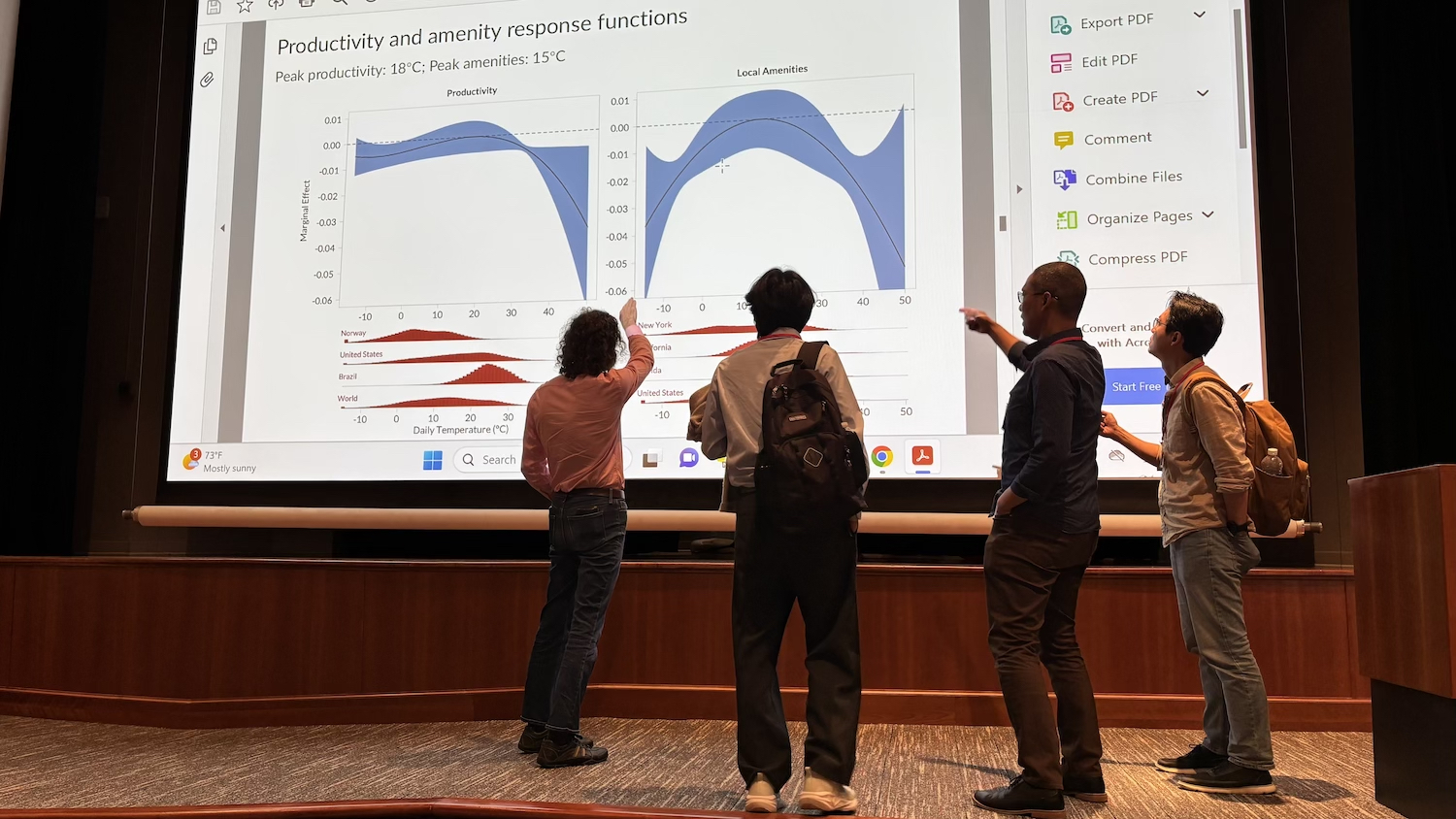Separating Immigration Rhetoric from Reality
Studies suggest that the actual effects of immigration differ greatly from narratives playing out in the presidential election.

Immigration has emerged as one of the most important issues to voters in the 2024 presidential election, and former President Donald Trump and Vice President Kamala Harris have laid out proposals to address voter concerns.
But there’s a significant gap between the rhetoric on immigration and the reality. There are three issues in particular where the evidence differs with the candidates and some measures of public opinion:
The ‘Crisis at the Border’
Trump has stoked the idea that immigration—particularly illegal immigration—is at an all-time high. But the truth is that overall immigration plateaued roughly 15 years ago. In 2010, immigrants made up 12.9 percent of the population, according to the Migration Policy Institute (MPI). Today, they make up 14.3 percent.
The share of U.S. residents born in Latin America and the Caribbean—regions Trump routinely identifies as the source of spiking immigration—leveled out at 6 percent a decade ago after a half-century of rapid growth, according to a 2023 paper published by the Journal of Economic Perspectives. The number of U.S. residents born in Mexico barely changed between 2007 and 2019. And there was no net growth in the number of undocumented immigrants living in America between 2006 and 2022, according to the Department of Homeland Security (DHS).
So, the reality is that immigration—legal and illegal—to the United States has actually slowed over the last decade. There are many reasons for this. Inflow of young people from Mexico and Latin America, which accelerated rapidly in the 1980s, has slowed partly because the gap in economic opportunity between their home countries and the U.S. has narrowed. Population growth in the Americas has slowed, Latin American economies have grown quickly and the U.S. economy has cooled, reducing the imperative to migrate, according to research by economists Gordon Hanson of Harvard University and Craig McIntosh of the University of California at San Diego.
That’s not to suggest that there isn’t some truth to the idea that more people are crossing the southern border of the United States. The number of asylum seekers entering the country has spiked dramatically in the last three years: from roughly 63,000 in 2021 to more than 456,000 in 2023, according to DHS data. There’s evidence that many of these people seek asylum because there are fewer legal routes to immigration.
The rise in asylum seekers has put more pressure on the already under-resourced system that processes applications. As of May 2023, there was a backlog of more than 1.3 million asylum cases in U.S. immigration courts, according to the MPI. Asylum seekers wait up to seven years to have their cases adjudicated, and only about 13,000 requests were approved in 2023.
Immigration and Integration
Much of the anxiety about immigrants and asylum seekers relates to their integration here. While fewer people are coming to America from Latin American countries, the bulk of immigrants and asylum seekers are still from nations like Mexico, Guatemala, Cuba and Venezuela. They’re often less literate and unlikely to speak English.
Fears of cultural clashes are nothing new. In the late 19th and early 20th centuries, Irish immigrants were singled out for their Catholicism, Germans for not speaking English, and Eastern and Southern Europeans for being less educated, John Higham wrote in his 2002 book, Strangers in the Land: Patterns of American Nativism, 1860-1925. All of those immigrants successfully integrated and spread out across the country.
There’s also significant fear that immigrants are more likely to commit crimes. The data suggests the opposite: They’re 60 percent less likely to be incarcerated than native-born Americans, according to a study published earlier this year in American Economic Review.
Employment Anxiety: Perception and Facts
There’s also concern that immigrants will take jobs from American workers. And it’s true that Latin American immigrants make up a large segment of the workforce in labor-intensive sectors, according to data from the Bureau of Labor Statistics:
- 27 percent of agriculture workers
- 34 percent of construction workers
- 18 percent of manufacturing workers
The evidence shows, though, that immigrant labor tends to complement native-born labor, not replace it. This happens in small and large ways. At the community level, the presence of large immigrant communities results in lower local costs for a range of personal services, including housekeeping, childcare and landscaping.
Giovanni Peri, C. Bryan Cameron Distinguished Professor in International Economics at the University of California at Davis has found that, between 2000 and 2022, “the inflow of immigrants both has increased the wages and employment of natives.” The wage increase of 1 to 2 percent isn’t large, but it’s real.
Having a large pool of immigrant labor could also slow the pace of automation, a phenomenon that’s rapidly displacing American workers. There’s a global labor imbalance, development economist Lant Pritchett has found: Slow population growth and native worker preferences leave many jobs unfilled in wealthy developed countries. There’s a massive collection of willing workers in less-developed countries. When restrictive immigration policies block them, employers in those larger countries turn to technological solutions.
“The number of people in the world that would drive trucks in America if they were legally allowed to is enormous,” Pritchett said on a recent episode of Tufts University’s Econofact podcast. “But, since they’re not allowed to, the Elon Musks and Jeff Bezos and Larry (Page) and Sergey (Brinn) of Google are all working on developing (the) technology of self-driving, but they’re driven to that by the lack of available labor. This isn’t a natural technological impulse.”
Policy Possibilities
All the evidence suggests that, rather than causing problems, immigration holds possibilities. Mass deportation, which Trump advocates, has a demonstrated history of accelerating job loss for native workers by raising labor costs and limiting the creation of new firms and jobs. Policies that offer more avenues to legal immigration and appropriately resourcing our existing immigration enforcement and adjudication systems would actually increase opportunities for would-be immigrants and native-born Americans alike.
Luca David Opromolla is the Owens Distinguished Professor of International Economics in the Poole College of Management.



